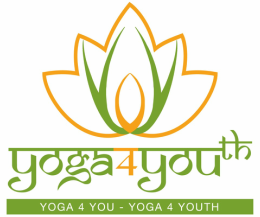
Before it comes into the world, a child moves in the mother’s womb. Many of these movements are reflex actions. Others, as ultra-sounds reveal, are intentional, purposeful movements, with the young fetus placing his thumb in his mouth or a twin reaching out to touch another in utero. Movement, and its role in human development, is fascinating but at no other time in history is its relevance to brain development more apparent than it is now.
Recent research is showing that purposeful physical movement is critical to brain development and that by creating opportunities for our infants and children to be stimulated in the right way, we can help their brains grow and develop to their fullest potential.
Every movement creates and strengthens connections within the brain and the nerve pathways in the body. These connections, known as synapses, are created through experience – repeated practice of the particular movement. Studies are showing that some of these movements in particular are vital for developing critical lifelong skills such as reading and writing as well as memory development.
Infants and children should be given innumerable opportunities to move purposefully throughout the day. Parents instinctively do this with their infants, encouraging them to reach for an object or crawling along the floor with them. While the parent may think that such natural movements by the baby are all part of his physical development, they may be pleasantly surprised to learn that they are also stimulating parts of his brain that are essential to reading, problem solving and self-confidence.
Yoga provides an environment of purposeful and stimulating movement for children from as young as 12 months. As the child bends, dips, kneels and stretches, his brain is creating unique movements by sending nerve impulses to his muscles. Since these movements may not be done in a sequence that the child was previously familiar with, parts of the brain are challenged to create new muscle sequences. These parts of the brain are those that are particularly used for problem solving and planning.
New studies are showing that yoga may also be beneficial to children with learning delays or behavioral disorders. By stimulating the cerebellum of the brain, movements incorporated in the yoga class can help rewire some of the vital connections in the body that may be missing. Whatever the unique situation, there is little doubt that movement stimulates learning in infants and children. Yoga 4 Youth welcomes all from strong walkers to teens to its yoga classes. Visit our schedule for class times.
Sources:
http://www.pesoftware.com/Resources/moveLearn.html
http://educationthroughmovement.highscope.org/wp-content/uploads/2011/12/Movement-and-Brain-Body-Connection.pdf
http://www.earlychildhoodnews.com
http://www.dailymontessori.com
Recent research is showing that purposeful physical movement is critical to brain development and that by creating opportunities for our infants and children to be stimulated in the right way, we can help their brains grow and develop to their fullest potential.
Every movement creates and strengthens connections within the brain and the nerve pathways in the body. These connections, known as synapses, are created through experience – repeated practice of the particular movement. Studies are showing that some of these movements in particular are vital for developing critical lifelong skills such as reading and writing as well as memory development.
Infants and children should be given innumerable opportunities to move purposefully throughout the day. Parents instinctively do this with their infants, encouraging them to reach for an object or crawling along the floor with them. While the parent may think that such natural movements by the baby are all part of his physical development, they may be pleasantly surprised to learn that they are also stimulating parts of his brain that are essential to reading, problem solving and self-confidence.
Yoga provides an environment of purposeful and stimulating movement for children from as young as 12 months. As the child bends, dips, kneels and stretches, his brain is creating unique movements by sending nerve impulses to his muscles. Since these movements may not be done in a sequence that the child was previously familiar with, parts of the brain are challenged to create new muscle sequences. These parts of the brain are those that are particularly used for problem solving and planning.
New studies are showing that yoga may also be beneficial to children with learning delays or behavioral disorders. By stimulating the cerebellum of the brain, movements incorporated in the yoga class can help rewire some of the vital connections in the body that may be missing. Whatever the unique situation, there is little doubt that movement stimulates learning in infants and children. Yoga 4 Youth welcomes all from strong walkers to teens to its yoga classes. Visit our schedule for class times.
Sources:
http://www.pesoftware.com/Resources/moveLearn.html
http://educationthroughmovement.highscope.org/wp-content/uploads/2011/12/Movement-and-Brain-Body-Connection.pdf
http://www.earlychildhoodnews.com
http://www.dailymontessori.com

 RSS Feed
RSS Feed